My latest cataloguing project is series MA/69, thefts and losses of objects. Cataloguing is a standard part of an archivist’s role. But it is also an opportunity to uncover fascinating stories about the V&A, in this case told by staff members who reported thefts; managers who sought to improve security; and the victims, and perpetrators of, the crimes. This article explores the theft of personal belongings and office equipment from staff areas of the museum in file MA/69/1/1.
What is cataloguing?
Cataloguing is the description of archival records. Key information is recorded at each level (title; date; number of items). Each record is given a unique number, which changes slightly at each level. For example:
MA/69 = the series of 102 theft/loss files
MA/69/1 = the sub-series of 7 theft/loss of non-collection item files
MA/69/1/1 = the first file in the sub-series of 7 theft/loss of non-collection item files
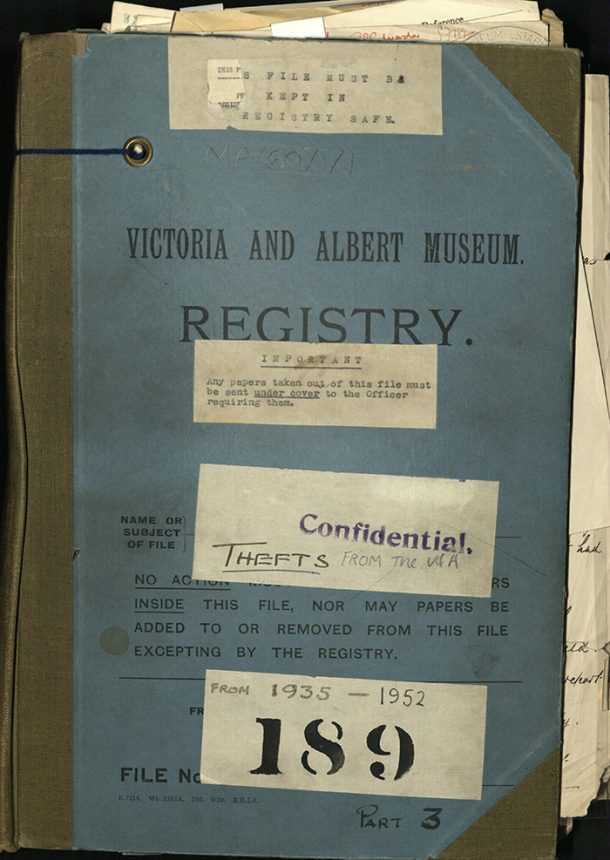
The case of the missing microphone
MA/69/1/1 opens with a statement from V&A staff member Mr Reed concerning the theft of a microphone from his office. The microphone was found missing on the 10th of October when a member of staff set up the Lecture Theatre for a talk. It had been ‘dismantled from the stand and taken away.’ It had last been seen on Thursday the 4th of July, when it was prepared, along with a second microphone, for a ‘meeting of delegates from the Geological Museum’. The meeting did not take place as the Lecture Theatre was too small, so the microphones were wrapped in paper and stored in Mr Reed’s office. Mr Reed moved to another office on the first floor while his room was redecorated. When he returned to his room, he replaced the microphones on top of the safe. They were still wrapped in paper, and he had ‘no reason to suspect that they had been tampered with.’ Mr Reed’s theory was that the microphone was taken whilst it was stored in the office on the first floor as he ‘was not in there much during the day and several workmen were working on that floor … including painters, telephone wiremen and officers of works men.’ Mr Reed had searched his office and ‘made enquiries’, but to no avail. Due to the fact that the microphone stand had been re-wrapped in paper, Mr Reed concluded that the microphone had been stolen. He reported the suspected theft to the police, and an officer came to the V&A on the 15th of October to question the chief warder and the contractors who had been working on the first floor. A note at the bottom of the document authorising the expenditure of £2 on a new microphone suggests that the missing microphone was never recovered.
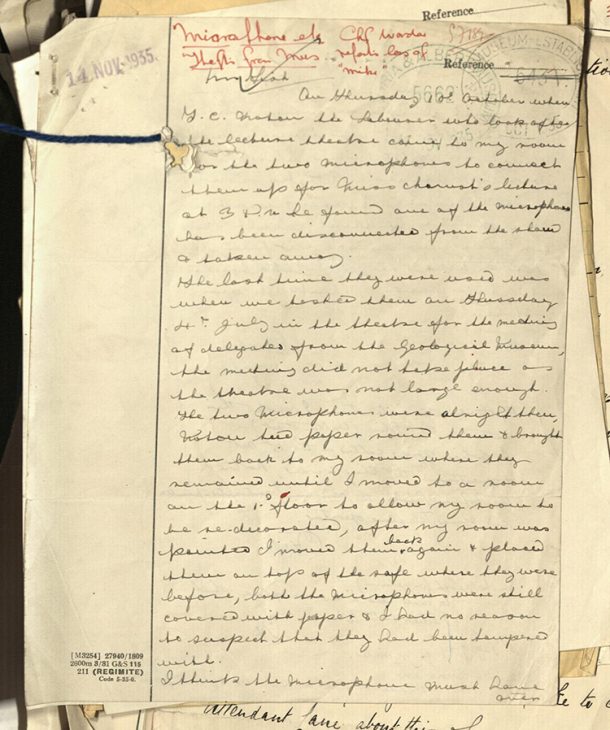
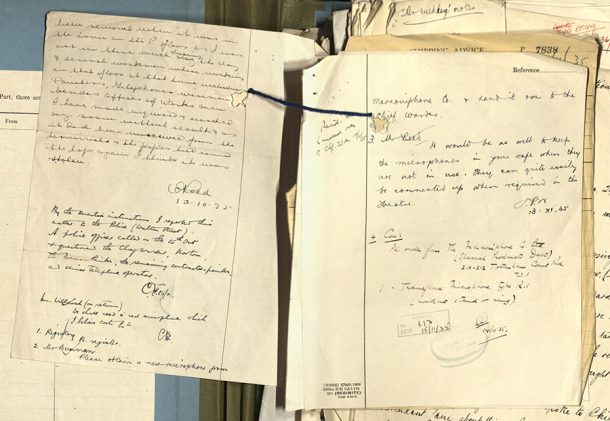
Stolen stamps
On the 23rd of November 1936, a staff member reported the theft of 4 1d stamps; 10 3d stamps; and 30 6d stamps from the Circulation Department offices. Upon opening their desk drawer, they found both the drawer, and the box inside where the stamps were stored, unlocked. They had both been locked on Saturday the 21st of November after that day’s parcels had been prepared. The existing procedures for storing stamps in various departments were analysed, and arrangements were made to improve security (it was suggested that the stamps should be stored in the ‘lock-up room’ every evening). The author seems particularly concerned that stamps used for correspondence were left unguarded between 1pm and 2pm because ‘the provision of a Ladies Rest Room has resulted in a frequently empty typing room.’ The stolen stamps were not recovered – their loss was reported to the General Post Office in July 1937, and their value was written off by the Treasury.
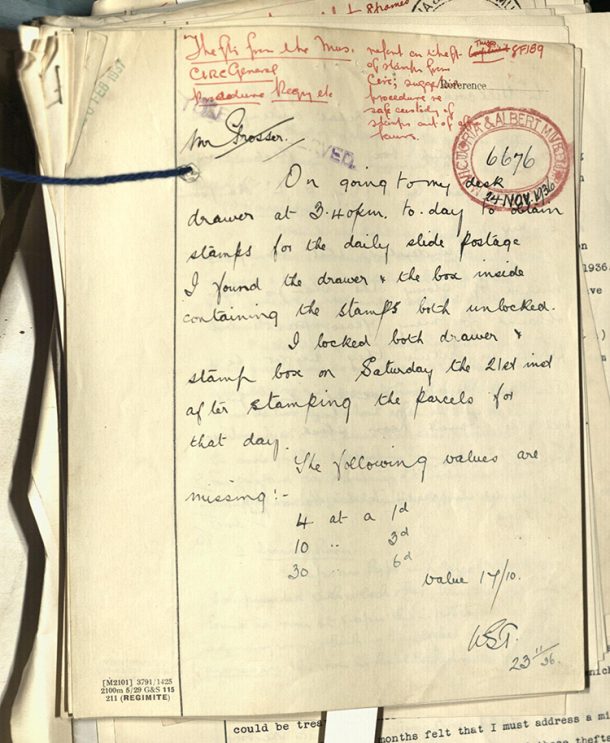
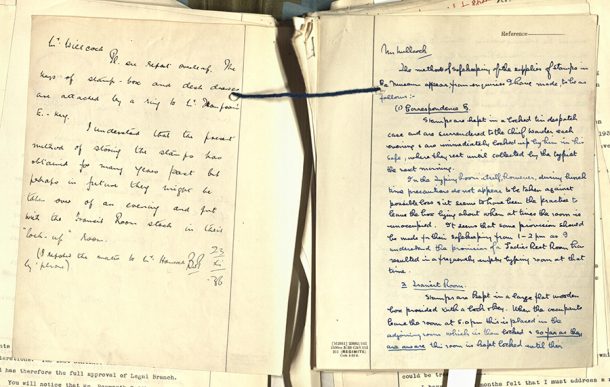
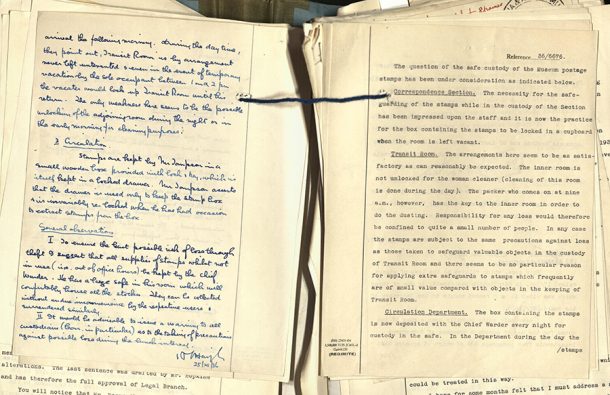
Who pinched my razor?
Mr Stewart’s new Kropp razor was stolen from the Architecture and Sculpture department offices in January 1938. The razor was stored, along with an old Kropp razor, in the top right-hand drawer of Mr Stewart’s desk. On Monday 10th he discovered that the old razor was still in place, but the new razor was missing. At first Mr Stewart was hopeful that he would discover who had taken the razor, but upon hearing that there were more people in his department’s offices than expected that weekend (between thirty and forty), he abandoned all hope of recovering his razor. Mr Stewart concludes his report with his feelings that it was ‘most unfortunate’ that a staff member’s personal property could be stolen, and that it should not be necessary to lock belongings away in staff areas of the museum. A lost property notice was displayed in staff dressing rooms asking for any information about the theft to be reported to the Chief Warder. As there is no further information about the razor in the file, it has to be assumed that it was not recovered.
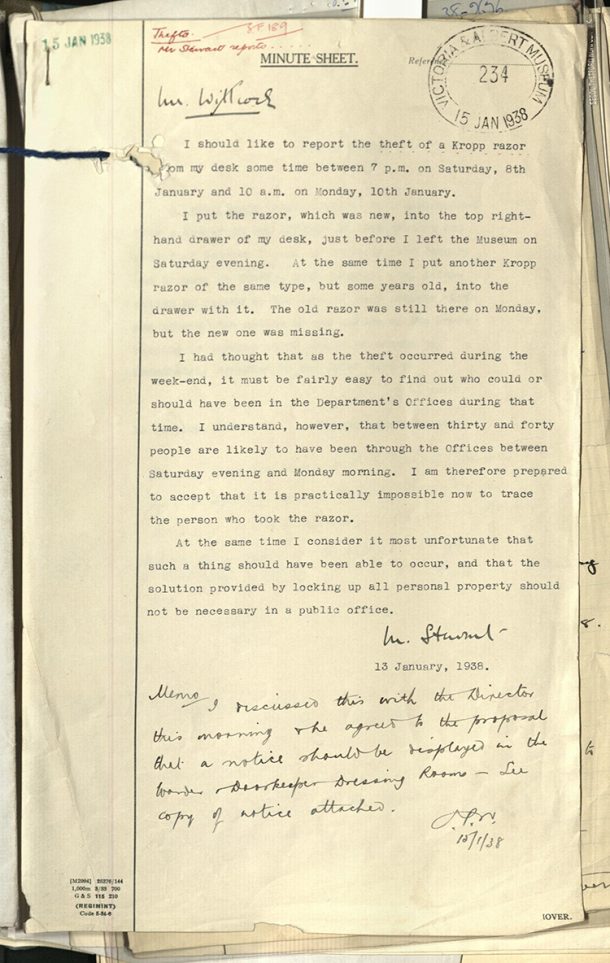
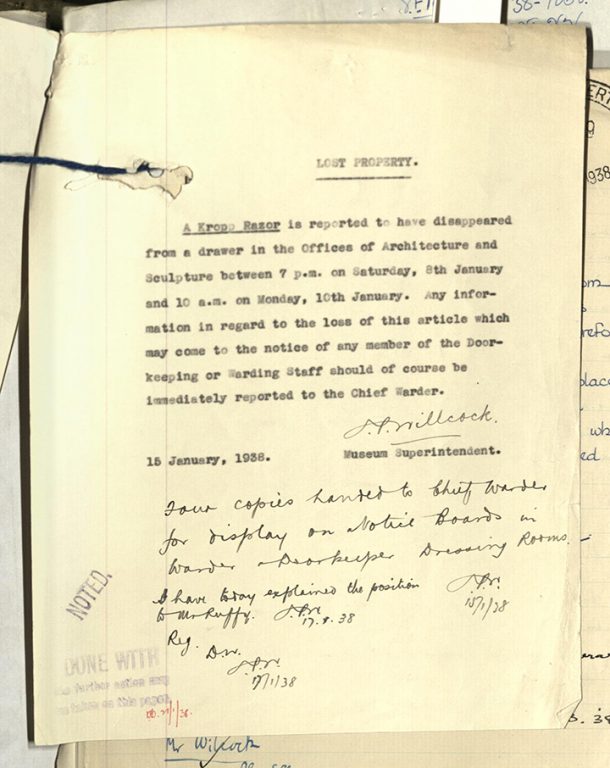
The umbrella swap
Staff member Mr Strand reported on the 1st of March 1938 that his ‘good’ umbrella had been taken from the umbrella stand in the mess room, and an ‘inferior’ umbrella which was ‘full of holes and therefore useless’ had been left in its place. Mr Strand believed that the umbrellas must have been swapped on Saturday the 26th of February, as he placed his umbrella in the stand at eight o’clock that morning, and when he left at eight o’clock that evening, he ‘was saddled with the useless object’ which had been swapped for his umbrella. On the 2nd of March 1938 the Chief Warder, Mr Reed was tasked with finding the owner of the imposter umbrella. Six days later Mr Reed reported that he had not been able to find the owner of the old umbrella, or the identity of the person who had ‘borrowed’ Mr Strand’s umbrella. Mr Strand was ‘almost sure’ his umbrella was in the stand when he entered the mess room at one o’clock, which led Mr Reed to focus his attention on staff who were on duty between 1pm and 8pm. On the 15th of March it was decided that there was ‘clearly nothing further’ that could be done to recover the umbrella.
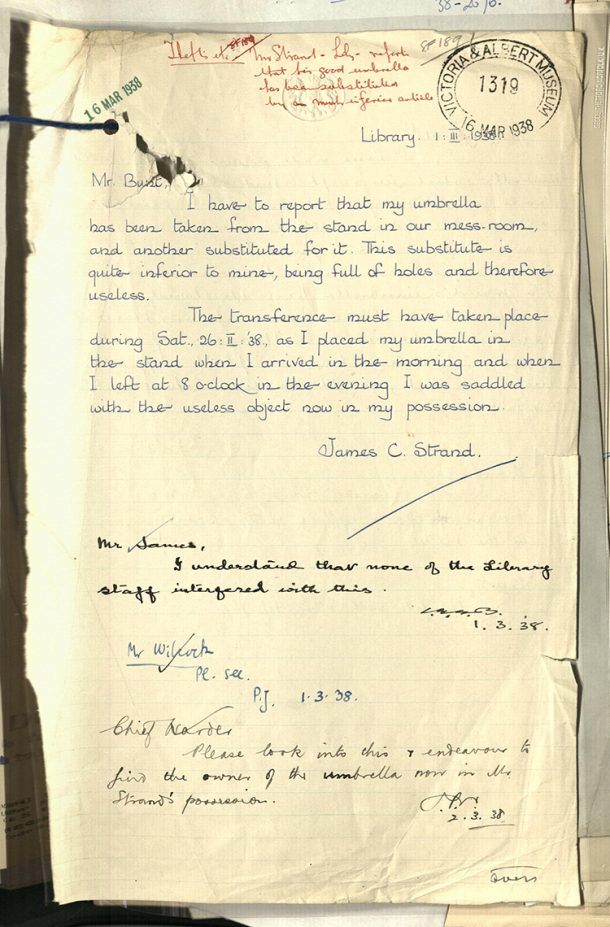
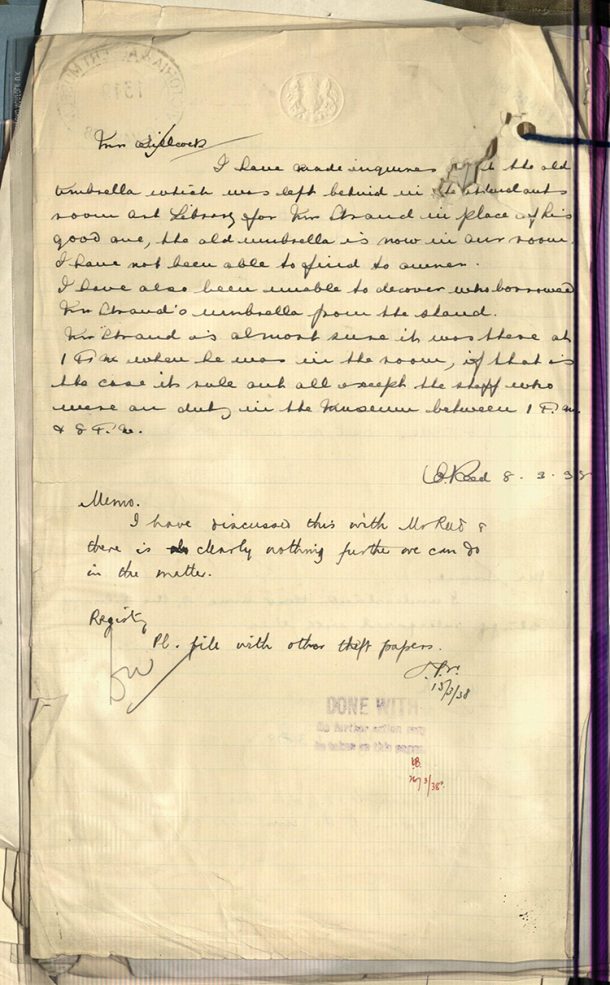
The missing pocket watch
On the 25th of October 1938 Mr Evans reported the loss of his gold pocket watch, and was able to provide a remarkably detailed description. Mr Evans had last seen the watch in a table drawer in the Lower Ceramics Office on Thursday the 20th of October at 11am. He discovered the watch was missing on Saturday the 22nd of October, when he found the drawer unlocked. Mr Reed believed that the theft must have occurred when the office was unoccupied between 5pm on Thursday the 20th, and 2pm on Saturday the 22nd. The Chief Warder notified the police and displayed notices in staff areas asking for information about the theft. Detective Sergeant Webb questioned staff members who knew where the watch was stored, as well as the Warders who were on ‘beat duty’ around the time the watch was stolen. The police had promised to keep Mr Evans up to date with any developments, but as there are no such documents in the file, it appears that Mr Evans and his watch were not reunited.
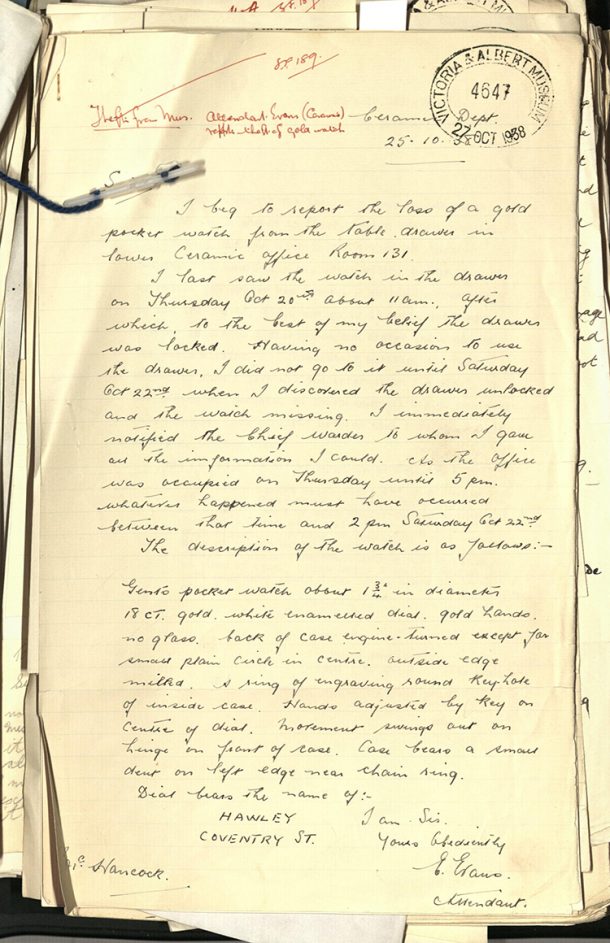
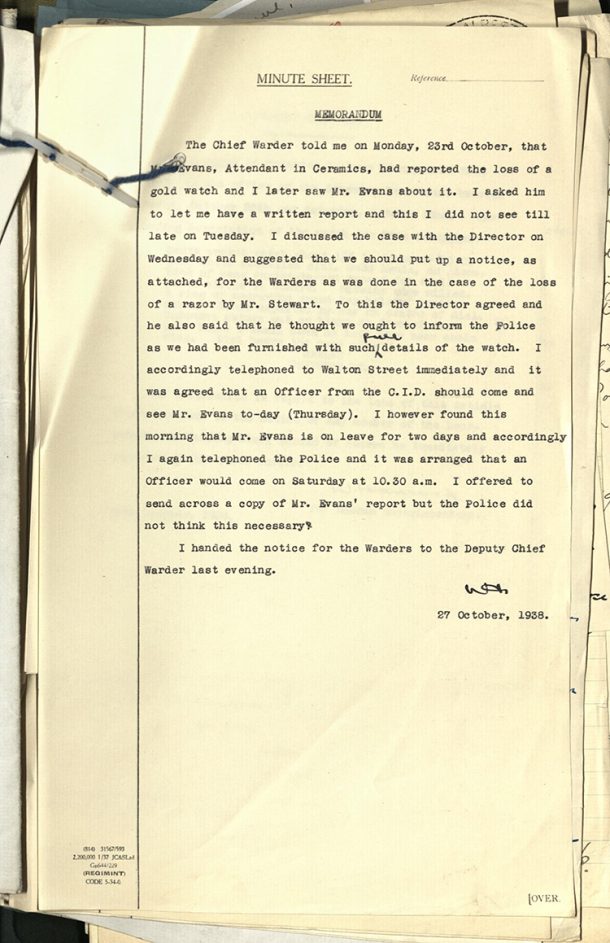
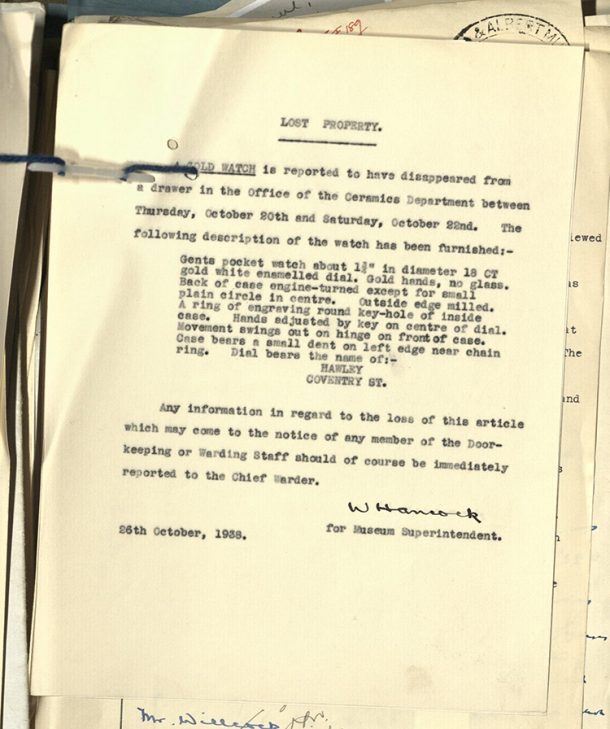
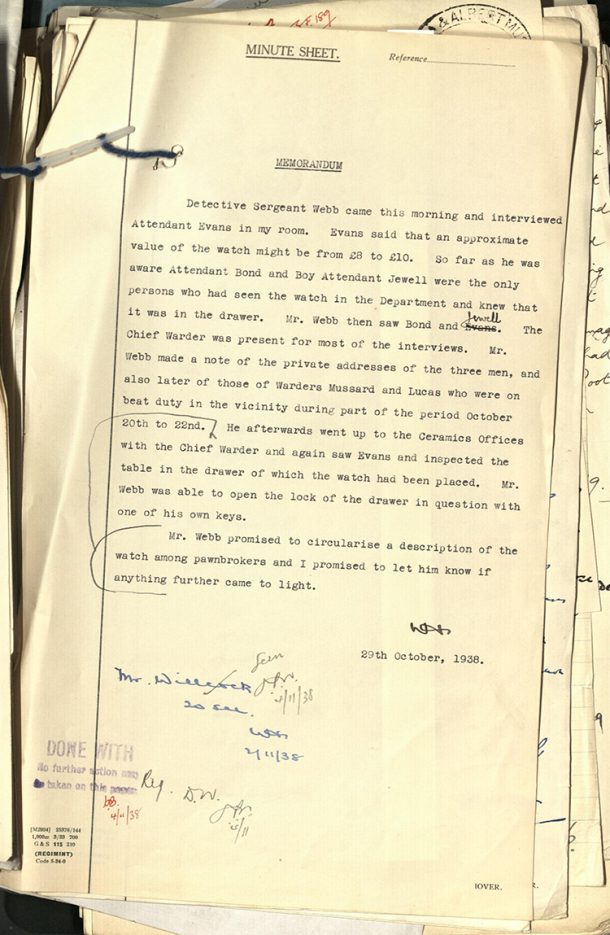
The great tray robbery
On 23rd June 1939 an ‘errand boy’ who worked for Messrs. Holland and Ditch greengrocers had been stopped at the museum’s secretariat gate because he was found to be in the possession of a ‘a tray fitting which had been purloined from the Works Mess Room’. The boy kept changing his story when questioned by staff, at first claiming that the fitting belonged to him; then later stating that it had been given to him, but refusing to name the person who had done so. The police were called, and a Detective Sergeant interviewed the boy and the ‘doorkeeper’ who had detained him. The boy eventually confessed that he had stolen the tray, and ‘expressed deep sorrow for what he had done’. Museum staff decided not to press charges, opting instead to give the thief ‘a severe lecture on honesty’.
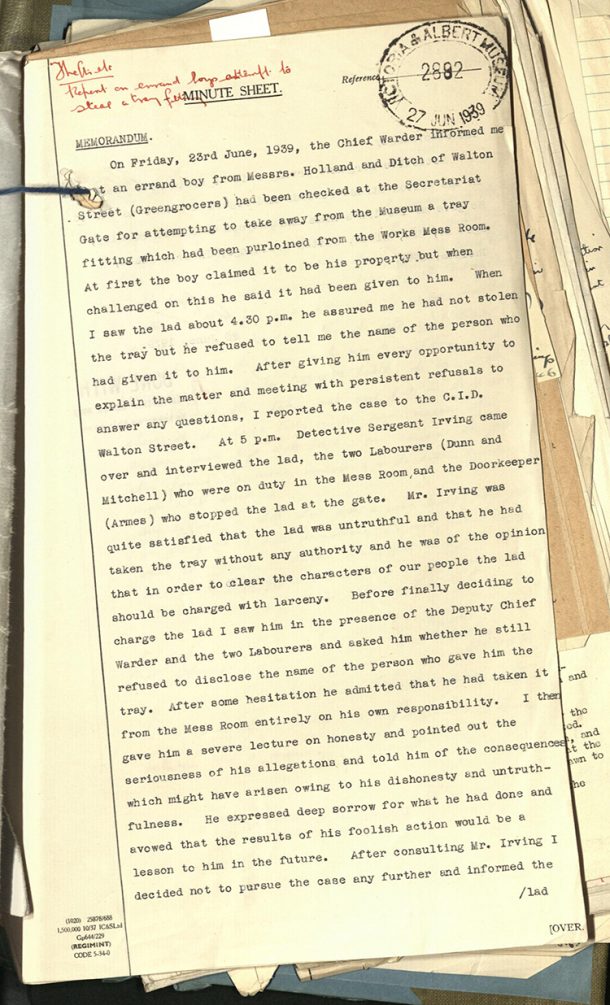
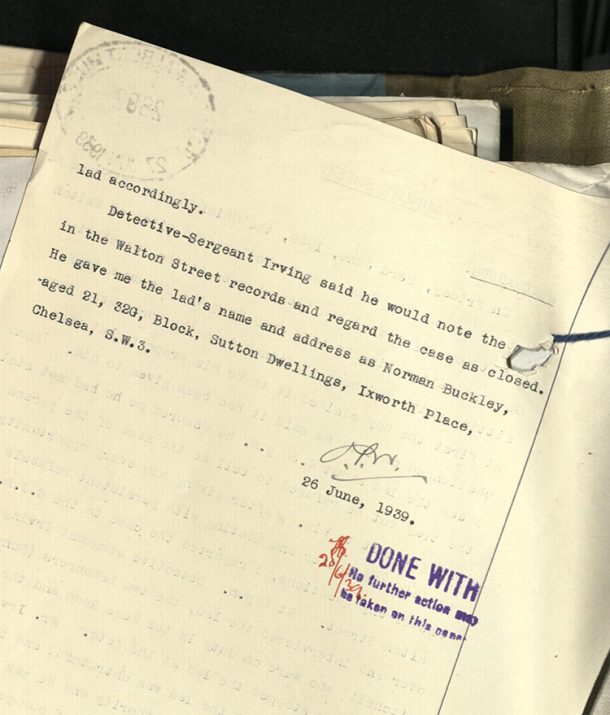
Who took the money from the coffee tin?
In July 1946, 13s, 9d was stolen from a coffee tin stored in the bottom drawer of the typist table in the Library Accession Department. On Saturday the 20th of June ‘the other girl typist’ had put the money in the tin and locked the drawer. The key for the bottom drawer was placed in the drawer above, which was left unlocked. On the 22nd of July, the bottom drawer was locked, but the money was missing. The Chief Warden concluded that ‘there was a good deal of negligence’ by leaving the key in an unlocked drawer. Further investigation revealed a discrepancy in the amount stolen (11s 3d instead of 13s 9d), and the investigator lamented that ‘petty pilfering is extremely hard to combat’ as ‘the opportunity would be there for practically any member of the museum staff to have taken the money.’
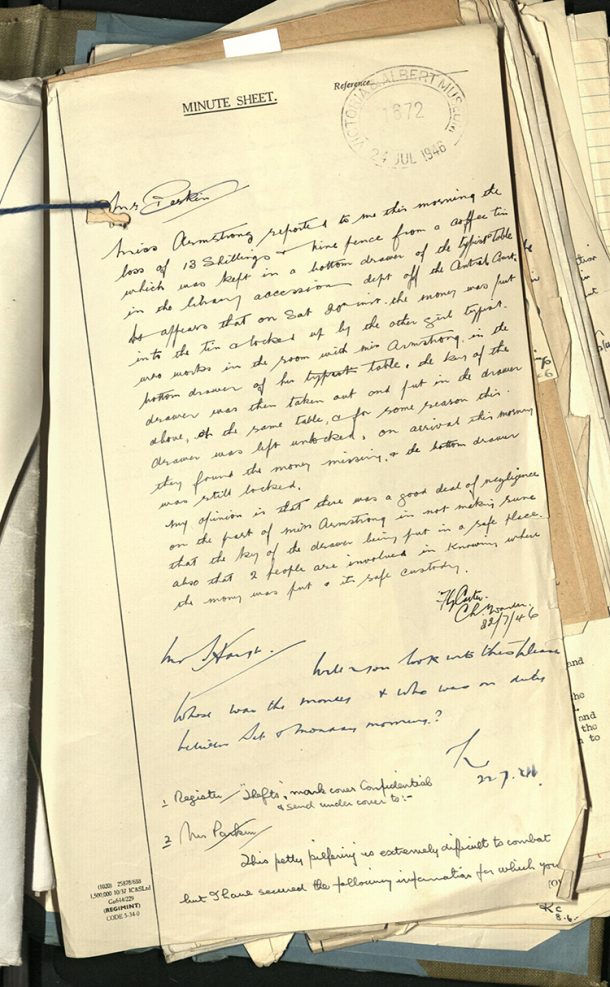
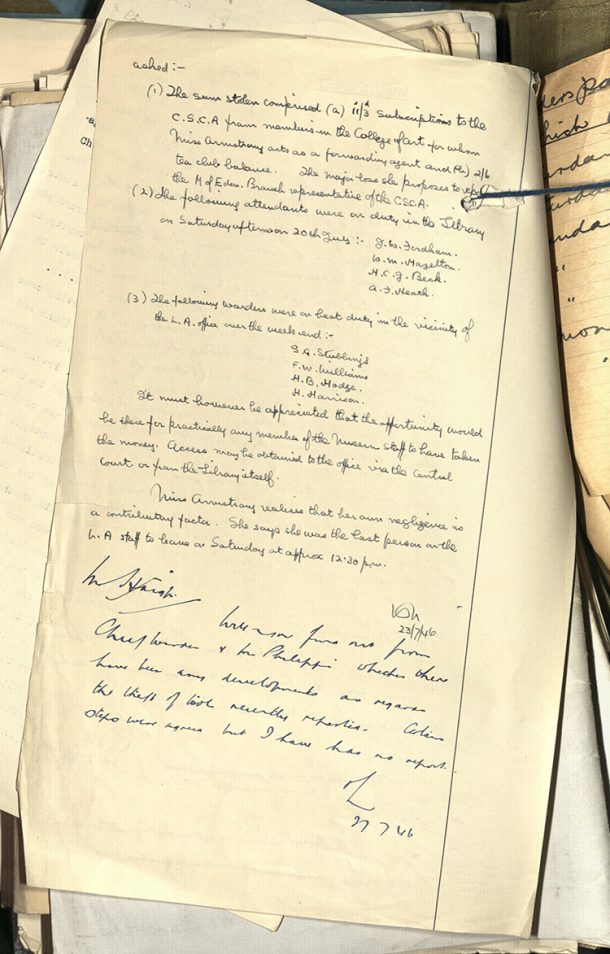
Find your favourite stories from the V&A Archives. Please note that access to the theft files might be restricted.
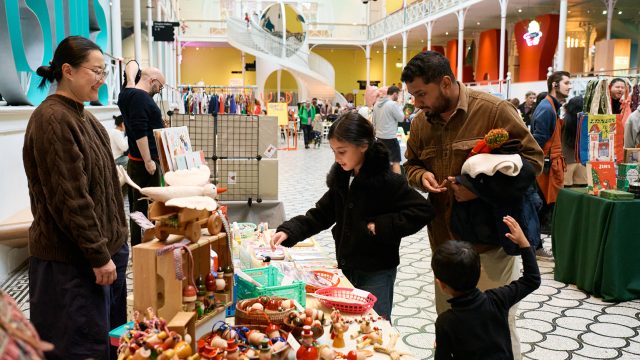
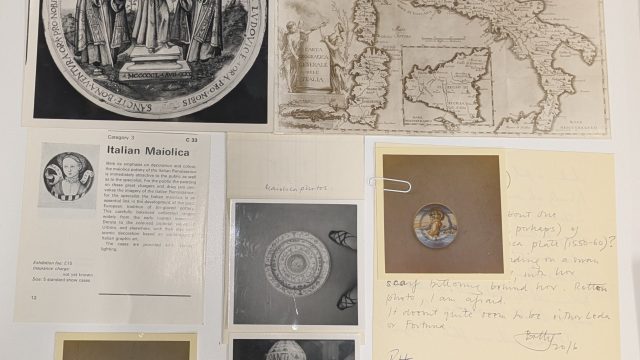
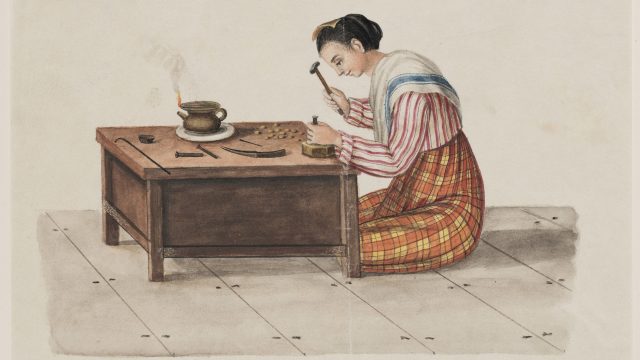
… I was saddled with the useless object which is now in my possession
I know exactly how poor James feels 😅
I love this post! Who knew that so many things have gone missing at the V&A?!